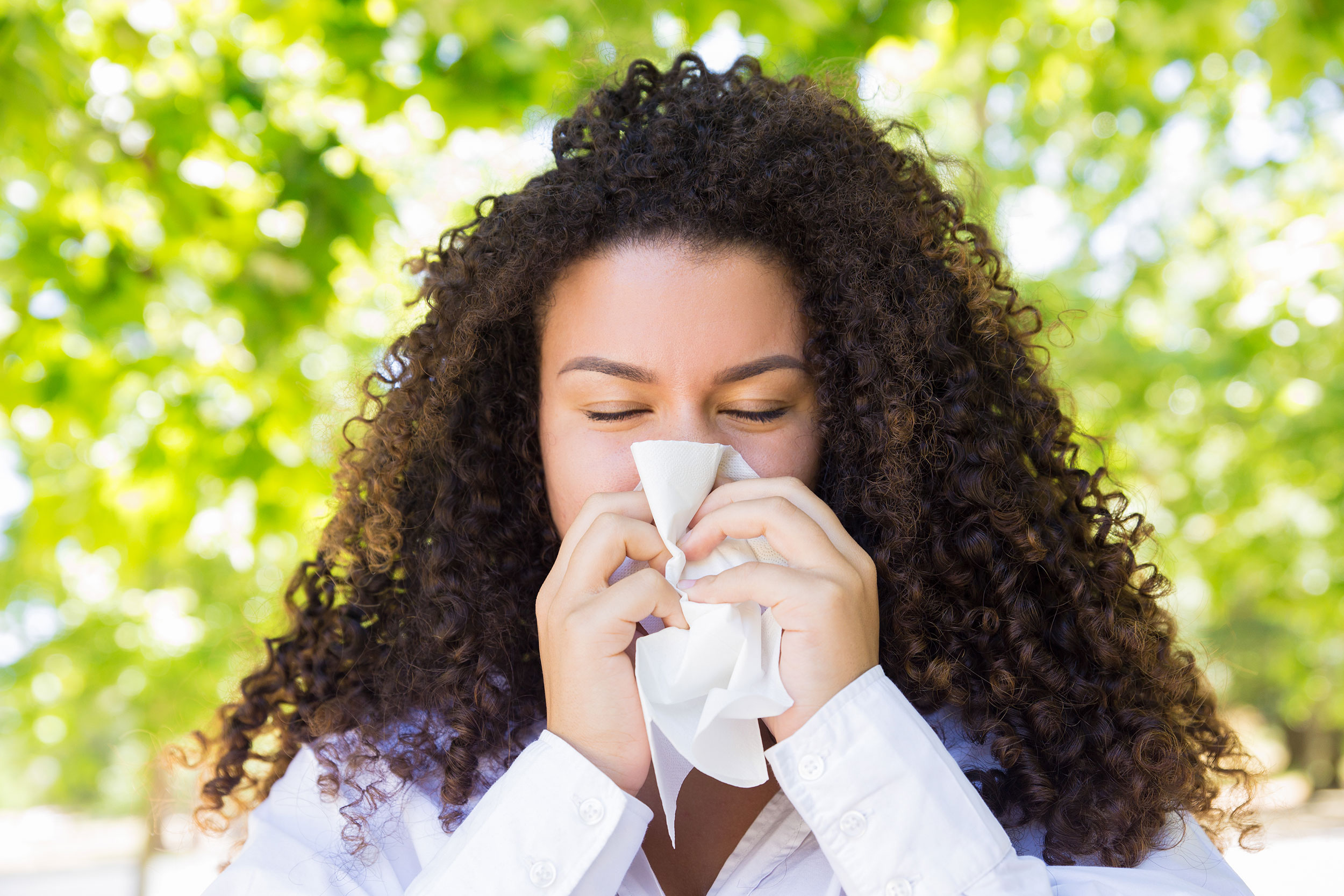Every day thousands of women around the world receive the life-changing diagnosis of breast cancer. As the World Health Organization reports, breast cancer is the most common cancer for women in both developed and developing countries. According to the Centers for Disease Control and Prevention, breast cancer is the second highest leading cause of death of women in the United States, and one in eight American women will be diagnosed with breast cancer at some point in her life. Chances are, you or someone you know has been or will be affected by this health challenge. In this article, we will look at what breast cancer is and how we can reduce our risk of developing it, using a holistic approach that encompasses the body (physical), mind (emotional), and spirit (our connection to Self ).
What is cancer?
The American Cancer Society defines cancer as “a group of diseases that cause cells in the body to change and grow out of control.” Cancer isn’t just one disease, but describes any number of situations where cell growth has gone unchecked. That is why there can be many different reasons why cancer develops.
Cancer begins when one of our own cells undergoes a change and becomes abnormal. This can happen through exposure to cancer-causing agents, or by a natural mutation in the DNA during cell division. Chronic inflammation in the body can also contribute to the formation of abnormal cells, as can imbalances in our metabolic functioning. When we have inflammation in the body, the excess of inflammatory chemicals can cause abnormal cells to form. With a healthy immune system, our body can recognize and rid itself of abnormal cells that may develop. If, on the other hand, our immune system is not healthy, our body is unable to recognize and eliminate abnormal cells. These cells may then continue to reproduce uncontrollably and cancer can develop. Making choices that strengthen our overall immunity are therefore protective against a host of disease processes, including cancer.
![]()
What causes breast cancer?
Although scientific research into breast cancer has been ongoing for many years, no one knows exactly what causes the disease to occur in each individual. We do know that there are several factors that can increase our risk of developing breast cancer, as well as many factors that can reduce our risk.
Our body and the environment
In considering our physical nature, we need to include our environment, which is truly an extension of our body. With every breath we take, every bite of food, everything we bring in through our senses, and through all the processes of elimination, we are in constant contact and exchange with the molecules around us. Whatever is in our environment eventually is incorporated into our physical structure.
One of the main physical factors in developing breast cancer is an increased overall lifetime exposure to estrogen. Our lifetime exposure can be increased by early age of first menstruation, having no or few children, choosing not to breastfeed, having a later onset of menopause, taking hormone replacement therapy (HRT), and exposure to xenoestrogens.
The choices we make in terms of lifestyle and diet affect our risk of developing breast cancer. For example, we know that alcohol consumption and carrying excessive fat tissue can affect the metabolism of estrogen and thus increase circulating levels in the body, contributing to an increased exposure to estrogen over a lifetime.
Eating a diet high in saturated fat from animals contributes to obesity and inflammation, as well as to the accumulation of many of the toxins that are stored in fat, thus leading to an increased risk of breast cancer. Research also shows that eating a diet that is low in the healing phytochemicals found in plants can predispose us to a variety of illnesses, including breast cancer.
On the other hand, a diet that contains many cruciferous vegetables (such as broccoli, cabbage, cauliflower, kale, and Brussels sprouts) can help reduce the risk of breast cancer. These vegetables contain a phytochemical known as indole-3-carbinol, which shifts estrogen metabolism away from the carcinogenic metabolites and toward a healthier estrogen metabolism, thus lowering the risk of breast cancer.
Having a sedentary lifestyle can also contribute to increased risk, while staying active and maintaining a healthy weight can help reduce the risk. A 2012 study published in The Journal of Clinical Endocrinology and Metabolism found that women with higher levels of daily exercise had lower levels of harmful estrogen metabolites in their body.
The threat posed by environmental toxins
There are many studies that confirm the effects of environmental toxicity on the development of cancer, and specifically breast cancer. These toxins can directly damage the DNA in our cells as well as altering estrogen metabolism. Toxins known as Endocrine Disrupting Chemicals (EDCs) favor the formation of estrogen metabolites that can negatively stimulate breast tissue and promote cancer-cell growth. As estrogen is metabolized in our body, we can form several different estrogen metabolites. One of those metabolites (16-alphahydroxyestrone) can promote breast cancer, while another form (2-hydroxyestrone) can be protective against breast cancer.
Environmental toxins are found in many everyday products, from cosmetics and canned foods to cleaning agents and pesticides. Not only do these chemicals act like estrogen in the body, they can also disrupt the body’s ability to detoxify substances, thus creating carcinogenic substances from natural substances already present in our body.
What about genes?
Genetic factors also play a role in our susceptibility to breast cancer and there are several genes that have been identified that increase the risk of developing breast cancer in a small proportion of individuals. However, despite these predispositions, there is a growing appreciation for the fact that genes can be “turned on” or “turned off ” and that our lifestyle choices are often the most important factor in gene regulation.
It’s important to keep in mind that although certain cancers are linked to defective genes, the vast majority of breast cancers are not due to these genes. In fact only about 5% of our genes are deterministic, and the rest are constantly influenced by our choices, including our choice to practice relaxation and stress management techniques and eat a healthy diet. In the past several years, several groundbreaking studies have documented the effect of mind-body practices on changes in gene expression. For example, a 2008 study by researchers at the Benson-Henry Institute for Mind/Body Medicine at Massachusetts General Hospital and Beth Israel Deaconess Medical Center found that participants who elicited the body’s relaxation response (a state of deep rest induced by breathing techniques, meditation, and guided imagery) experienced significant changes in the expression of thousands of genes. The control group of participants who did not practice the relaxation response did not experience these changes in gene expression.
As the study showed, the genes that were affected were ones that govern our capacity to respond to oxidative stress at the cellular level, as well as inflammation − two factors that make us more susceptible to cancer. The researchers found that when we induce the relaxation response, we are reversing the biological changes of fight-or-flight, thus reversing the negative biological effects of stress. In a new study published this year, the same group of researchers was able to show that these beneficial effects occur after even a single relaxation response session.
By limiting toxicity in our lives and making healthy choices, we can help prevent certain genes from expressing themselves while increasing the expression of health promoting genes. These steps will greatly reduce our likelihood of developing cancer as well as many chronic diseases.
The role of emotions
From a mind-body perspective, both physical and emotional factors play a role in the development of disease. Unresolved emotions or stored emotional toxicity can interfere with the normal communication between the cells in our body, leading to abnormal cellular behavior. Unmanaged stress in our lives can send biochemical signals that put our body in “fight or flight” mode. The signals can suppress our immune system and interfere with our innate healing ability. When we are under chronic stress, our mind and body become “inflamed,” and there is a release of harmful inflammatory chemicals that can increase our risk of cancer.
We now have a sophisticated understanding of the mindbody connection that wasn’t appreciated years ago. Many cells in our body respond to the chemical signals sent from our brain. We are constantly communicating our current emotional state to the rest of our body via neurotransmitters. Therefore, a persistent negative emotional state can impair the proper functioning of our physical body. When we understand and accept this connection, we can begin to change the conversation that our mind is having with our body and move ourselves towards health, rather than away from it.
The spiritual dimensions of health and well-being
In addition to the appreciation of the mind-body connection, a consciousness-based approach to cancer incorporates the added level of our spiritual intelligence. This is the natural intelligence inherent in our mind-body that orchestrates the thousands of processes that occur every second without our conscious effort. It is the part of our being where we experience meaning and purpose and a connection to something greater than our individual selves. From this perspective, in the purest, uninhibited expression of this divine consciousness, each cell in our body functions in its unique way, while also supporting the wholeness of our physiology. Ideally, this process continues effortlessly and infinitely. However, when there is some interference in this effortless communication between our cells, be it physical and emotional toxicity, or a loss of the sense of connectedness, individual cells begin to take on a life of their own without regard to the whole.
![]()
When we consider this perspective, it opens us up to an increasing number of modalities that can help us return to our natural state of oneness and connectedness, such as meditation, yoga, and other mind-body-spirit practices.
Spiritual practices connect us to our unbounded selves, and in doing so elicit a deep relaxation response in our mindbody. When we are in a state of deep relaxation and connection, our entire physiology has the potential to change. As we’ve discussed, research shows that inducing the body’s relaxation response through practices such as meditation, deep breathing, and guided imagery can lead the body to turn on (express) healthy genes and turn off (not express) harmful genes.
In addition to affecting our genes, when we engage in mind-body-spirit practices, we learn to calm the emotional turmoil in our minds. We also begin to access our innate healing abilities that keep us in balance and health.
Lifestyle choices that reduce the risks of breast cancer
From a physical perspective, breast cancer prevention begins with lifestyle choices that reduce modifiable risks that affect the body’s overall estrogen burden, including decreasing the exposure to and production of harmful estrogens, enhancing metabolism and elimination of estrogens through detoxification, reducing inflammation, and enhancing immune function. The following are some areas where lifestyle choices can make a difference:
- Eat an anti-inflammatory diet rich in fruits and vegetables, high in fiber, and with adequate omega-3 fatty acids.
![]()
Dietary fiber helps with elimination of excess estrogen, and fruits and vegetables provide phytonutrients and antioxidants. Include indole-3-carbinol and diindolylmethane found in cruciferous vegetables like broccoli, cauliflower, Brussels sprouts, kale, and bok choy; quercitin found in apples, cabbage, onions and garlic; and resveratrol (found in the skin of red grapes) to help in the healthy metabolism of estrogen.
Eat foods that enhance detoxification, including those in the allium family (such as onions, leeks, garlic, and chives); methionine-rich foods like sesame seeds, Brazil nuts, and some other plant seeds; and foods that support glutathione levels, such as avocado, asparagus, broccoli, garlic, spinach, tomatoes, and turmeric.
Omega-3 fatty acids found in walnuts, soy, flaxseeds, and other seeds improve the good (2-hydroxy)/bad (16-hydroxy) estrogen ratio and are anti-inflammatory. In addition, consumption of phytoestrogens (plant-based estrogens) such as non-GMO soy foods (edamame, tofu, tempeh), legumes, and seeds, has been associated with a lower breast cancer risk. However, don’t overdo it with soy supplements and processed soy products, as we don’t know the effects of high levels of these substances.
- Reduce environmental exposures from foods.
![]()
Choose organic fruits and vegetables to avoid exposure to pesticides. If you eat fish, choose smaller, less fatty, non-bottomdwelling varieties that don’t bio-accumulate toxins such as PCBs and heavy metals. If you eat beef, poultry or dairy, choose organic if possible and hormone-free to avoid consuming the residue of livestock growth hormones.
- Drink plenty of fresh water.
Check your municipal water supply and utilize filtration such as reverse osmosis to remove contaminants – or drink pure spring water. A general recommendation is to drink half of your ideal body weight in ounces per day (so if you weigh 150 pounds, you would want to drink 75 ounces of water). If you use a water bottle, choose one that is BPA-free, glass or stainless steel.
- Limit alcohol.
Have no more than one drink a day (one glass of wine or beer, or one mixed drink) because alcohol interferes with the proper metabolism of estrogen.
- Control your weight.
Being overweight or obese increases the risk of breast cancer. This is especially true if obesity occurs later in life, particularly after menopause. In addition, people with insulin resistance or adult-onset diabetes mellitus may have an increased level of circulating estrogen.
- Get plenty of physical activity.
Being physically active can help you maintain a healthy weight as well as reduce stress. In addition, regular exercisers produce less of the toxic 16-hydroxyestrone.
- Get a good night’s rest.
One chemical that has protective effects against breast cancer is melatonin, our natural sleep hormone. There are many mechanisms that have been identified, including immune support, that explain this effect.
- Ensure regular elimination.
Constipation can lead to recirculation of estrogen and thus increased levels of this hormone. Eating a healthy diet and getting adequate hydration will help ensure elimination.
![]()
- Reduce inflammation.
The best ways to do this are by eating an anti-inflammatory diet (described in this article), maintaining a healthy body weight, improving oral health, treating chronic infections, meditating, and managing chronic physical and/or psychological stressors.
- Check your Vitamin D level and supplement if needed.
Vitamin D is essential to many processes in the body, including immune function, and studies have shown that optimal blood levels (25-hydroxy Vitamin D of 50-60 ng/dl) are associated with a decreased risk of breast cancer as well as many other health conditions. If your blood level is suboptimal, check with your healthcare practitioner for proper dosing to safely increase your Vitamin D level. In general, 2000 IU daily of cholecalciferol or Vitamin D3 (the active form of vitamin D) is a good maintenance dose.
- Maintain healthy detoxification.
Certain individuals have genetic differences that impair the ability to detoxify. These can be identified through testing and can often be addressed with diet and nutritional strategies.
- Carefully consider hormone replacement therapy (HRT).
Although a full discussion of the controversies of HRT is too long to include here, studies have shown an increased risk of breast cancer with long-term use of estrogen with synthetic progestin (medroxyprogesterone acetate, aka Provera), but not estrogen combined with other progesterones. Risk of breast cancer was also associated with use of estrogen only in menopausal women who began HRT less than five years after menopause and in women ages forty-five and older who had their ovaries removed. Testosterone use in postmenopausal women may also lead to increased risk of breast cancer.
Several types of estrogens have been used for HRT, so it’s important to find out what type(s) are being administered. Estriol selectively binds to the estrogen receptor-beta, which inhibits breast cancer development and has thus far not been associated with increased breast cancer. Estrone, on the other hand selectively activates estrogen receptor-alpha, which promotes breast cell proliferation. Estradiol is a third type of estrogen that equally activates ER-alpha and ER-beta. Synthetic or conjugated equine estrogens (such as those found in Premarin) selectively bind estrogen receptoralpha and down regulate estrogen receptor-beta.
If you are experiencing menopausal symptoms, you may be able to manage your symptoms with lifestyle modifications, herbal remedies, or other non-hormonal therapies. If you decide with your doctor that the benefits of hormone therapy outweigh the risks, consider using bio-identical hormones such as estriol and estradiol at as low a dose as possible for your symptoms for as short a time period as possible. Using locally acting and topical estrogen instead of oral dosing for symptoms such as vaginal dryness avoids systemic estrogen circulation and metabolism by the liver. Also make sure that your doctor is treating your symptoms and not a lab result. Just because your hormonal levels are not in the “normal range” for a woman of reproductive age does not mean that you require supplementation.
- Avoid exposure to environmental endocrine disrupting chemicals (EDCs), heavy metals, and carcinogens.
![]()
Here are the main toxicants to avoid:
Polycyclic aromatic hydrocarbons (PAHs) in tobacco smoke, char-grilled foods, vehicle exhaust, and gasoline fumes.
Flame retardants (such as PBDE in foam mattresses, furniture and children’s sleepwear).
Plasticizers (such as phthalates found in some children’s toys and PVC plastics).
Bisphenol A (BPA), found in the liner of most canned fruits and vegetables, many food containers, polycarbonate plastic water bottles, and thermal cash register receipts.
Some weed killers (herbicides such as atrazine and glyphosate).
Some pesticides.
Air fresheners, products to control mold and mildew, chemical cleaning supplies and detergents such as those containing 4-nonylphenol. Use non-toxic cleaning supplies that do not contain EDCs.
Heavy metals that can mimic estrogen, such as aluminum (in cookware and antiperspirants) and cadmium (in cigarette smoke).
EDCs in personal care products such as sunscreens, lotions, cosmetics, shampoos, fragrances, etc. Our skin is our largest organ and you should put nothing on your body that you would not also eat.
- Breastfeed your infants if you are able.
![]()
The longer you breastfeed, the greater the protective effect.
While these recommendations may seem daunting, many of them will not only decrease the risk of breast cancer but will also reduce the risk of developing other cancers, cardiovascular disease, diabetes, and degenerative diseases.
Early detection is key
Much of the increased survival for those diagnosed with breast cancer is attributed to early detection and treatment. While regular self-exams are no longer advised, pay attention to your breasts and consult your healthcare provider if you notice any changes, such as a new lump, skin changes, or discharge. Get regular health checkups that include a clinical breast exam by your provider, who may also recommend other screening tests such as mammograms, breast thermography, or MRI.
Prevention through emotional release
On an emotional level, decreasing negativity and “reactive” thought patterns will reduce the reactivity of the body. This will reduce the risk of a host of diseases, including cancer. There are many ways we can break the negative thought cycles and release accumulated emotional toxicity. Here are a few suggestions:
- Keep a journal.
We can release toxic emotions by journaling. Identifying how we are feeling and writing it down has the same effect as releasing the feeling by talking to someone. It settles down the amygdala, which is the part of the brain that is activated when we are stressed, provoking the body’s fight-or-flight response. Especially focus on releasing any fear, anger, guilt, and resentment that you may be storing. Write down your intention to release these emotions.
- Practice conscious communication.
Find ways of consciously communicating your feelings. Rather than “stuffing” your emotions and not discussing them, you can release the negativity by working toward resolving emotional conflicts.
- Train your brain.
Focus on positive thoughts whenever you notice negative ones. Instead of activating the stress part of our brain, when we have positive thoughts, we activate the cerebral cortex, which is where we feel joy, love, compassion, and peace.
Whenever you notice your mind wandering towards negative thoughts, think of three things you are grateful for, or three things you like about yourself or someone else.
- Exercise.
Moving your body increases the “feel good” hormones in your brain and decreases stress, in addition to giving you many other physical benefits.
- Prevention Through Spiritual Practices
When we connect to our innate wholeness through spiritual practices, it allows us to access our inner healing abilities. We strengthen our defenses against abnormal cells and activate the pathways that give us health and vitality.
Here are a few ways to bring spiritual practices into your daily life:
- Meditate daily.
There are many ways to meditate. All styles of meditation are designed to quiet the chatter of our minds and settle the body so that we can experience calm, peace, and connection.
- Practice yoga or other mind-body exercises.
Yoga, tai chi, qi gong, and other practices are not only a form of physical exercise, but at a deeper level, they keep us aligned with our natural rhythms and balance.
- Connect to nature.
Often people feel a deep spiritual connection by taking a walk in a beautiful natural setting, or by gazing up at the stars. Find a way to connect to nature wherever you live and feel your inextricable connection to the natural world.
- Connect with family and friends.
When we nurture our intimate relationships with others, we feel the divine energy that connects us to all things. The love and support of people around us is a source of strength and healing, and can keep us healthy.
- Practice Pranayama (yogic breathing techniques).
Deep, rhythmic breathing induces the relaxation response and calms the mind and body. By practicing these ancient breathing techniques, we can connect to and experience our deep spiritual nature. They remove obstructions to the flow of spiritual energy through our bodies, which is controlled by the breath.
![]()
By understanding breast cancer from a mind-body-spirit perspective, we begin to see it as a phenomenon of the mind-body. We can then start to make choices that are most healthy for our physical and emotional layers while accessing our deepest source of health and natural balance through spiritual practices.
Disclaimer: The information in this article is intended for your educational use only and is not a substitute for professional medical advice, diagnosis, or treatment. Always seek the advice of your physician or other qualified health provider with any questions you may have regarding a medical condition and before undertaking any diet, fitness, or other health program.
![]() Sheila Patel, M.D. is the Medical Director of the Chopra Center for Wellbeing. She is a board-certified family physician and a certified instructor of Primordial Sound Meditation and Perfect Health/Ayurvedic Lifestyle. She enjoys helping patients find balance in their lives through the integration of modern medical therapies and ancient healing wisdom.
Sheila Patel, M.D. is the Medical Director of the Chopra Center for Wellbeing. She is a board-certified family physician and a certified instructor of Primordial Sound Meditation and Perfect Health/Ayurvedic Lifestyle. She enjoys helping patients find balance in their lives through the integration of modern medical therapies and ancient healing wisdom.
![]() Valencia Porter, M.D., M.P.H. is the Chopra Center’s Director of Integrative Medicine. Board-certified in both General Preventive Medicine and Integrative Holistic Medicine, Dr. Porter has a caring, individualized approach that encompasses all aspects of her patients’ lives. She is also a Chopra Center-certified Vedic Master and has a Master’s Degree in Environmental Health.
Valencia Porter, M.D., M.P.H. is the Chopra Center’s Director of Integrative Medicine. Board-certified in both General Preventive Medicine and Integrative Holistic Medicine, Dr. Porter has a caring, individualized approach that encompasses all aspects of her patients’ lives. She is also a Chopra Center-certified Vedic Master and has a Master’s Degree in Environmental Health.















